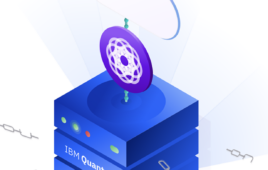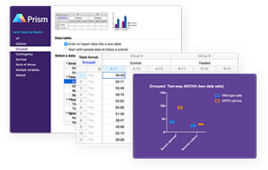.jpg)
Credit: Benchling
When it comes to getting better products to market faster, there are a few familiar ways that biopharmaceutical companies aim to gain a competitive edge. They hire the best talent they can, acquire investors and partnerships, streamline their development processes as much as possible. This ends up working for some persistent companies, but there’s one potential advantage that biotech companies consistently overlook: lab software.
Scientific progress, brought to you by outdated software
Given the reputation of lab software, it’s hard to blame them. A recent study found that scientists spend up to 25 percent of their time on non-lab activities like paperwork and inventory management. Even (and especially) in established biotechs with ostensibly mandatory Electronic Lab Notebooks (ELNs), many scientists prefer using paper, and often, usage actually decreases over time as the limitations of clunky software grow more apparent. Reduced usage, in turn, increases development time by spreading records and work across ad hoc systems. Laboratory information management system (LIMS) software is similarly cumbersome, with products making grand claims of flexibility and usability only to saddle scientists with rigid, unwieldy programs built on outdated standards. (Many LIMS are structured around a certain recently discontinued web browser.) On top of their independent impracticality, ELNs and LIMS rarely interface with each other, forcing scientists to transfer data manually.
As a result, lab software is often seen as a begrudged formality, either by scientists or informatics staff. Biotechs adopt ELNs and LIMS not to push the status quo of R&D but to measure up to it. Obviously, they want what’s best for their organizations and for their scientists, but you can only expect so much when the software you’re considering can be outclassed by paper.
A Long overdue upgrade
No one should be complacent with legacy software, and thankfully, some biotech companies have realized that they don’t have to be. Taking a page from the extremely user-friendly software that smartphones are putting at everyone’s fingertips, bioinformatics companies are building a new generation of lab software around scientist usability. This new technology is spreading through biotech and pharma, displacing legacy ELNs, LIMS, and molecular biology tools just as those systems once displaced pen and paper (or tried to, at least).
The new generation of lab software rids science of grunt work, eliminating the human hours scientists used to waste transferring data between disparate software systems. The automation that this software enables reduces inefficiencies across the board, letting scientists focus on science instead of record-keeping.
For once, scientists are excited to use their tools, which are built with their workflows explicitly in mind. The new Lab Notebooks aren’t merely digital versions of paper; they’re active tools for planning the research process, with rich integrations with sequence design tools and sample tracking systems that automatically build experimental context and parse results out of Notebook entries.
New sample tracking systems are truly flexible while being feature-rich, a combination that can accelerate research at any organization, regardless of its structure. Scientists can register any sample, track any information about it, and create custom linkages to build an interconnected web of registrations. And unlike their predecessors, these new systems are unified in integrated platforms, unlocking the potential for new features while optimizing existing ones. For the first time, scientists can see all entries in which a sample was used, or all samples used in an entry, and query among samples and results based on specific fields or conditions. Registered plasmids aren’t simply the names of plasmids; they’re actual sequence files, viewable with the molecular biology tools that are natively integrated into the registration system.
Transforming a global antibody discovery company
One antibody discovery company with multiple international sites used this technology to unify its disparate research processes across the globe. For this company, screening takes place in Europe, with characterization in the U.S. Previously, data would be stored in completely different tracking systems for each of these stages, with data transfer occurring through one-off emails and spreadsheets. Redundant data entry ran rampant, and wasted human hours were spent sifting through all the different systems for accurate candidate records.
Within weeks of adopting a next-generation informatics platform, this company was able to onboard its globally-distributed scientists and import their existing data on a single solution. For the first time, the company had complete access to its own institutional knowledge. Communication among global teams was streamlined immensely, since they could all do their work on the same platform, regardless of their location. Average time to data entry was reduced from weeks to hours, and since its work was being done all in one place, results could be validated in monumentally less time.
Beyond making organizations more efficient, the next generation of lab software encourages scientist usage and garners unprecedented user satisfaction. A recent survey of industry scientists found that more than 90 percent of them preferred it to their previous tools. The most common reasons were that it makes their research easier, more organized, more collaborative, and faster.
With increased scientist usage, the elimination of data loss and duplication, reduced data entry and validation time, streamlined deployment, and modern customer support, this new generation of lab software is giving early biotech adopters an unequivocal edge. Put simply, these tools decrease time to market while simultaneously decreasing costs and making scientists happy.
And the best part? They look like they’re from 2016, not 1996.




